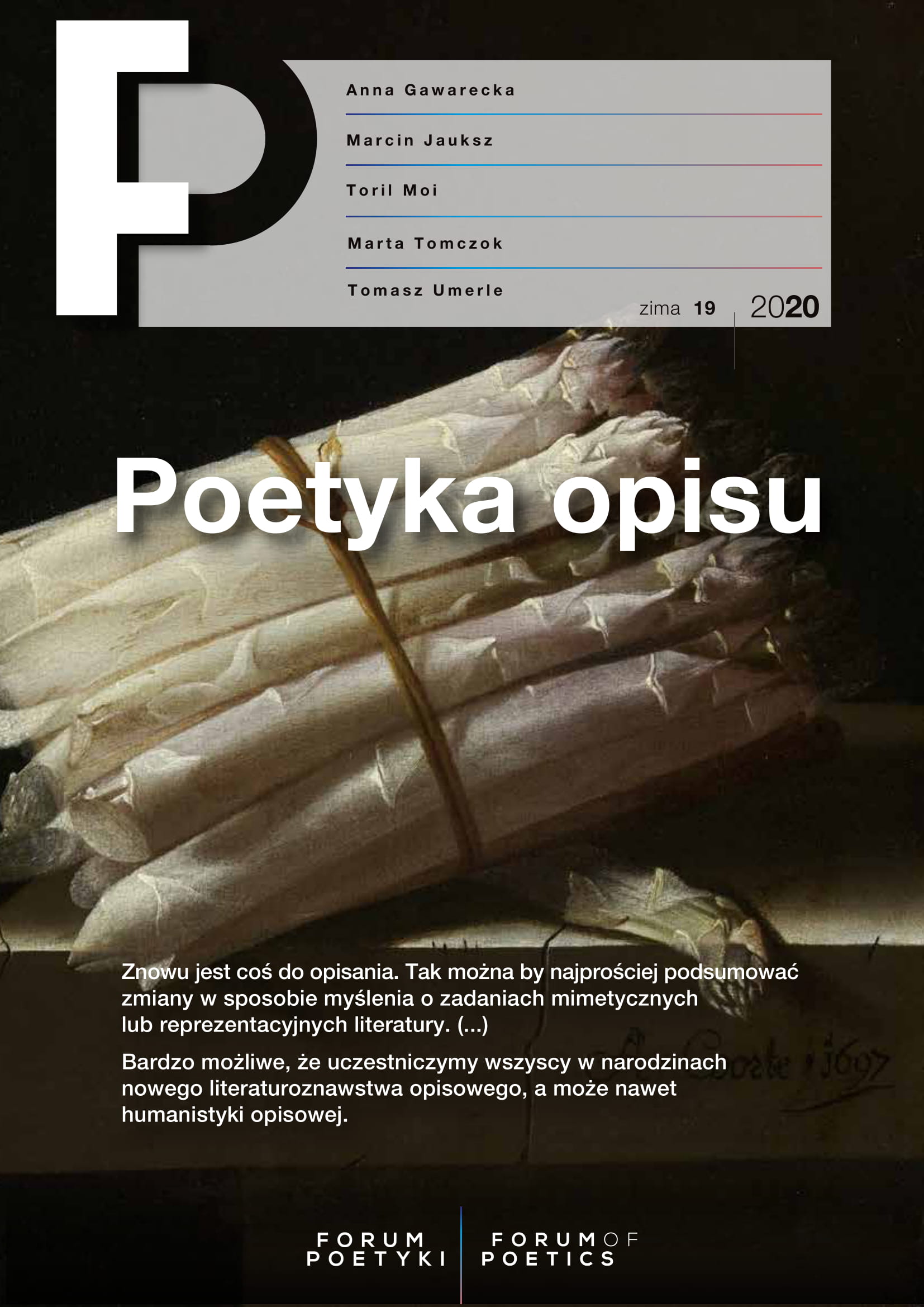„Nic tu nie jest ukryte”. Poza hermeneutyką podejrzeń
“Nothing Is Hidden”. Beyond the Hermeneutics of Suspicion
Author(s): Toril MoiContributor(s): Gerard Ronge (Translator)
Subject(s): Theory of Literature
Published by: Uniwersytet Adama Mickiewicza
Keywords: Ludwig Wittgenstein;teoria literatury;filozofia języka; analiza i interpretacja utworu literackiego;hermeneutyka podejrzeń
Summary/Abstract: n literary criticism, proponents of critique assume that texts have hidden meanings that must be uncovered by the critic. This has given rise to the idea that “suspicious” or “symptomatic” reading is a specific method of “deep” reading, as opposed to “surface” reading. Drawing on Wittgenstein and Cavell’s thought, Moi challenges such views. Talk about surfaces and depth do no work for literary critics. Just as there is no “approach” to language, there is no method in literary criticism. Even famous suspicious readers such as Sherlock Holmes and Sigmund Freud don’t read any differently from other critics: they simply look and think. The suspicious critic is convinced that texts lead us astray; Wittgenstein thinks we get lost in our own words. For him, philosophy is the attempt to get from such self-inflicted confusion to clarity. In literary criticism, this means trying to answer the question “Why this?”
Journal: Forum Poetyki
- Issue Year: 2020
- Issue No: 19
- Page Range: 48-62
- Page Count: 14
- Language: Polish

